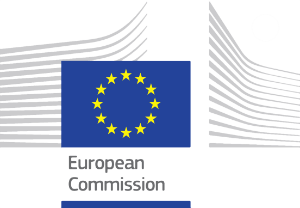The ASTRA Museum is a public cultural institution with its primary objectives encompassing research, the collection of cultural assets, recording, preservation, restoration, and the promotion of cultural heritage. It achieves these goals through exhibitions, cultural programs, publications, and various communication forms, all aimed at fostering knowledge, education, recreation, and the overall development of the institution. The organization is structured to harmonize the functions of a museum institution with an ethnological profile, representing diverse ethnocultural aspects (Romanian, Saxon, Roma, and universal ethnography). It encompasses collections related to traditional civilization and art, and functions as a scientific research hub in the field. The program was organized into various activities.
- 6 interactive music and dance workshops, with a monthly frequency, centered around groups from both rural and urban areas of Sibiu. The goal was to create a conducive environment for interaction between different communities, as well as between their representatives and museum visitors. Additionally, the workshops aimed to educate participants by involving them in authentic forms of traditional artistic expressions.
- A total of 60 craft workshops were conducted as follows: • Sewing, crocheting, and making felt objects workshops encouraged the public to create various traditional household items. The sewing workshops highlighted how urban tailoring influenced the rural fashion of different national communities (ethnic minorities) in Romania. The objects created during these interactive workshops were provided as samples to the participants. • Interactive dance workshops, costume parades, choreography, and traditional interpretation specific to Romanians living outside the borders of Romania were conducted. These workshops showcased values of international intangible cultural heritage and emphasized the Romanian cultural heritage that shapes the identity of Romanians from historical Romanian territories outside Romania, such as the Republic of Moldova. • Carpentry and joinery workshops illustrated the connection between urban and rural in terms of tools used and practices employed, within the context of a multi-ethnic Transylvania. Participants in these workshops had the opportunity to learn from craftsmen the methods of refurbishing their traditional furniture. • Workshops for making utilitarian ceramics will illustrate the traditions and practices used by multi-ethnic communities in Romania. • Ceramic firing workshops illustrated firing methods in a traditional kiln. • Workshops for making food and household storage furniture reproduced objects from the museum located in various foreign regions. These replicas of objects were adapted to contemporary daily life. • Workshops for creating household and agricultural tools used in urban and rural gardens. The typology of the tools illustrated interethnic influences in the practices of making agricultural tools and the influences that Saxons and Hungarians had on Romanians. • Painted furniture workshops illustrated the aesthetic practices of decorating traditional Saxon, Hungarian, and Romanian furniture. • Experimental archaeology workshops (making tools used in carpentry, blacksmithing, and specific guilds and crafts).
- 14 Cultural animations were designed to portray significant figures from the rural world in the 19th-20th centuries. These animations were dedicated to characters from rural areas, aiming to shed light on the realities and life sequences, as well as institutional and social practices that characterized daily existence in the multi-ethnic Romanian rural context. Serving as a sustainable means of conveying the cultural heritage of the ASTRA Museum, these cultural animations underscored the concept of an animated museum.
The project played a crucial role in altering the perception of urban residents concerning the practical value of elements inherent to intangible heritage, such as crafts, know-how, and artistic expressions. Additionally, through its diverse activities, the project helped establish the museum as a premier leisure destination for locals and tourists, addressing elements of interest and relevance to urban communities.
The project contributed to changing the perception of urban residents regarding the practical utility of elements specific to intangible heritage (crafts, know-how, artistic expressions). Also, through its activities, the project contributed to positioning the museum as one of the top choices for leisure among residents, addressing elements of interest and relevance for urban residents.
The project also had the objective of educating the public on the responsible use of natural resources, advocating for the utilization of local resources to minimize individual ecological footprints, and fostering the development of sustainable programs for communities. Specifically, the craft workshops in carpentry and joinery, where participants learned to undertake minor repair or refurbishment interventions, were designed to counteract a throwaway culture.
In light of 2023 being designated as the Year of Traditional Heritage Skills, ASTRA Museum is committed to further developing the platform for valorizing traditional crafts within an emerging market, contributing to the growth of a national crafts market.
The project serves as a model of good practice by implementing the objectives of international sustainable development programs at the local level. It achieves this by promoting experiential learning through craft workshops, where participants acquire techniques employed in traditional crafts that they can later apply in their own homes.

